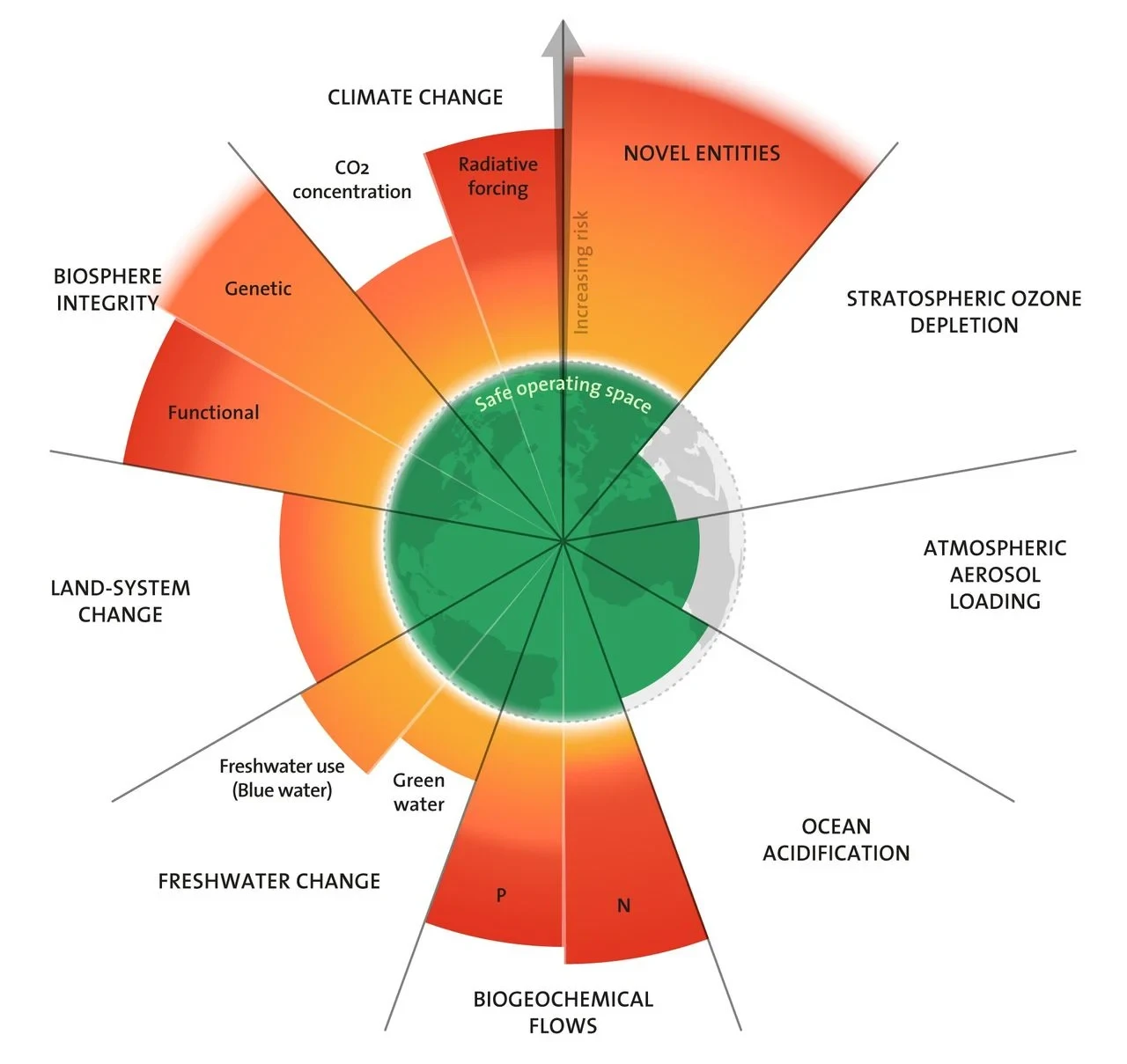As a first step, identifying what planetary boundaries are and which ones exist is essential. Therefore, we will rely on trustworthy sources to provide accurate information from experts on the subject.
According to the Stockholm Resilience Centre, planetary boundaries are a concept proposed by scientist Johan Rockström, introduced by his team in 2009. These boundaries serve as guidelines to identify and understand the limits within which humanity can operate safely in environmental terms, avoiding drastic and potentially irreversible changes to the Earth's system. We could compare them to signs in a park that tell you where not to go to stay safe. But seriously, these indicators provide us with the margin within which we must remain so that the living system (all living beings) can continue to function normally without disruptions.
Among these boundaries, we find Climate Change, which is perhaps the most well-known and widely discussed. However, this does not diminish the importance of the others. These boundaries are interconnected, meaning that the disruption of one can have repercussions on the others.

To understand what the planetary boundaries are, we will rely on data from the Potsdam Institute for Climate Impact Research (PIK), a world-renowned center located in Potsdam, Germany, dedicated to interdisciplinary research on climate change challenges and the development of mitigation and adaptation strategies. Let’s explore the nine planetary boundaries!
1️⃣ Climate Change – The most recognized boundary, which aims to keep global temperature rise below a certain threshold—typically, not exceeding 1.5 - 2 degrees Celsius above pre-industrial levels.
2️⃣ Ocean Acidification – Highlights the importance of maintaining the ocean’s pH balance to preserve marine ecosystems.
3️⃣ Biosphere Integrity – Related to the preservation of biodiversity and ecosystems to sustain vital functions and ecosystem services.
4️⃣ Freshwater Use – Refers to the sustainable rate of use of water resources.
5️⃣ Land-System Change – Concerns soil fertility and the alarming rate of land degradation.
6️⃣ Biogeochemical Cycles – Refers to the excessive release of nitrogen and phosphorus into ecosystems through agriculture and other human activities.
7️⃣ Atmospheric Aerosol Loading – Relates to the maximum level of suspended particles in the atmosphere that the Earth can tolerate without causing harmful effects.
8️⃣ Novel Entities – A boundary concerning the release of synthetic chemical substances into the environment, including industrial chemicals and pesticides.
9️⃣ Stratospheric Ozone Depletion – The thinning of the ozone layer, which protects us from ultraviolet radiation, regulates the climate, and plays an essential role in photosynthesis.
As mentioned earlier, these boundaries are interconnected, and exceeding them could trigger abrupt and dangerous changes in the Earth’s system, compromising the planet’s ability to sustain life as we know it. This is why we emphasize the importance of raising awareness and being responsible individuals.
At Bono, we care about the well-being of the population, and we believe that a future can be built where there is balance between social progress and environmental preservation, respecting boundaries that help us coexist. Let’s walk together toward learning and understanding topics that allow us to maintain order and coherence with the Earth.
🌍 See you in the next blog!